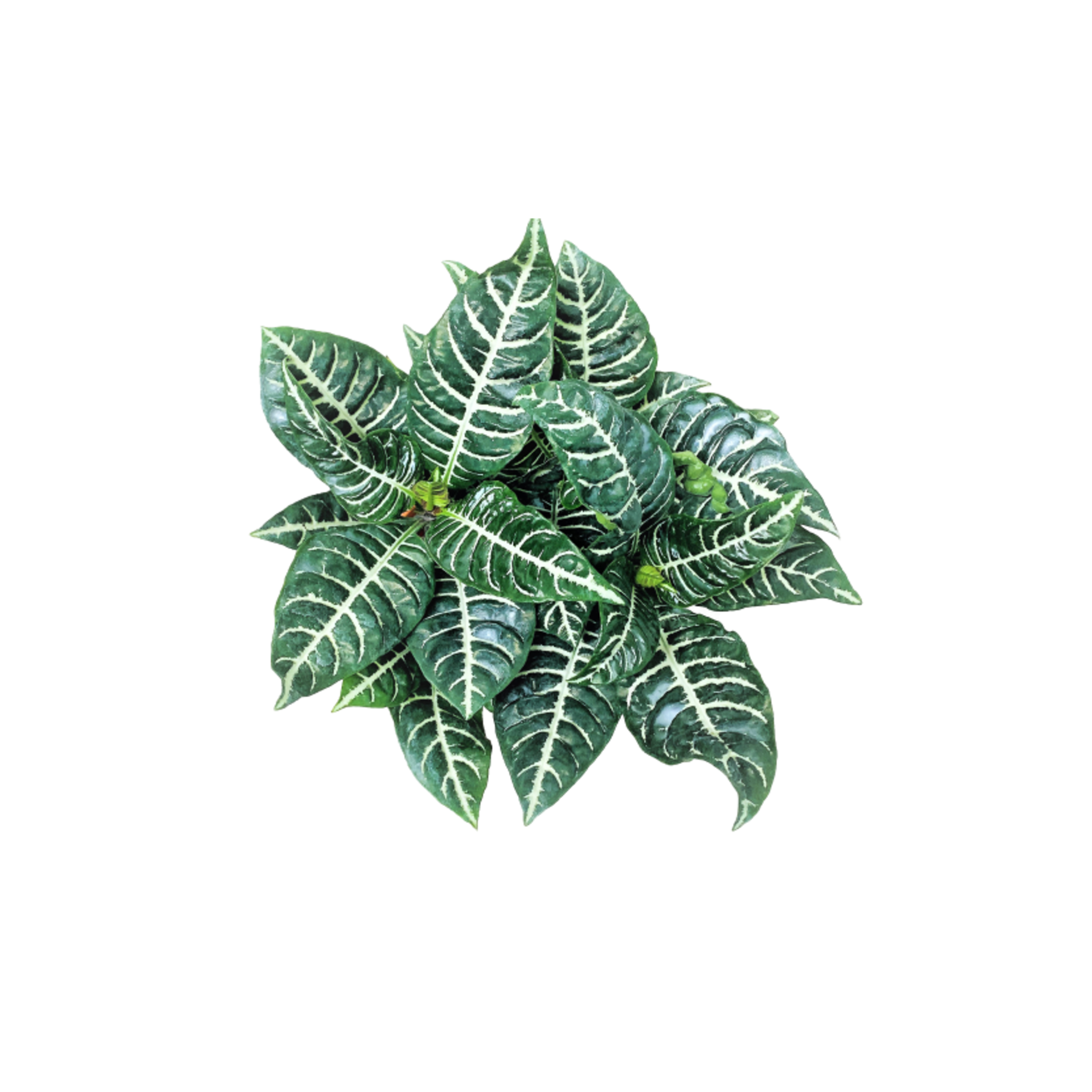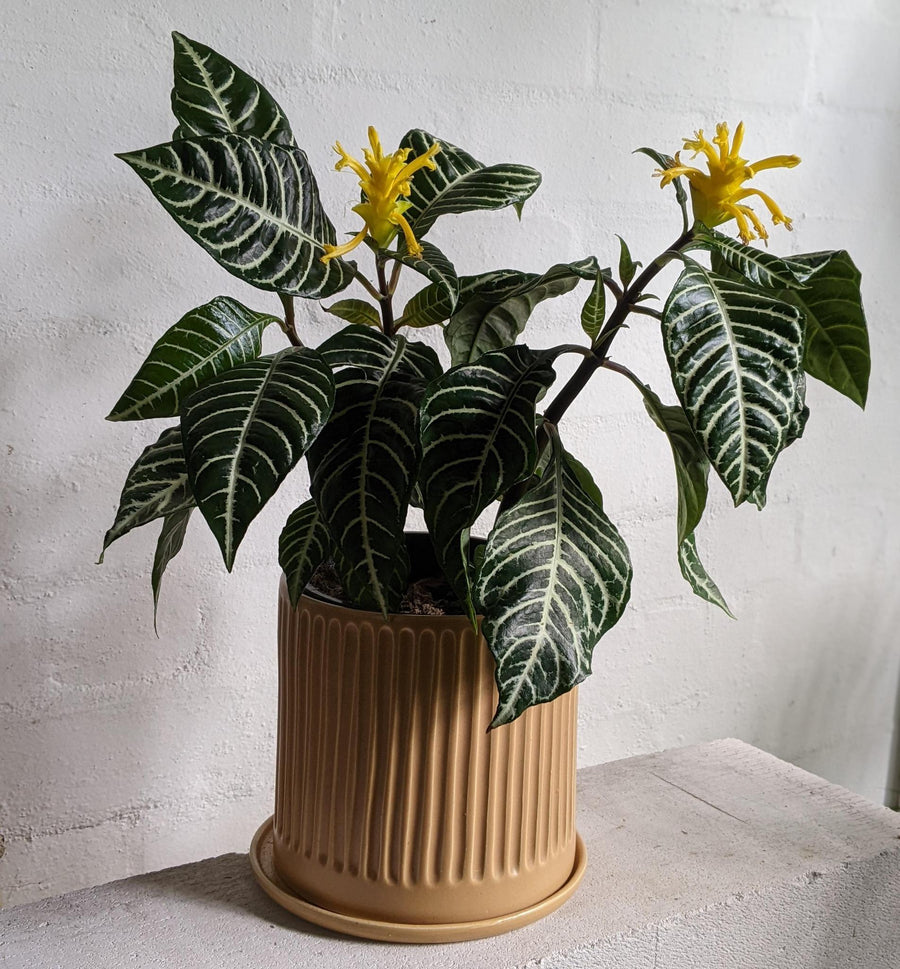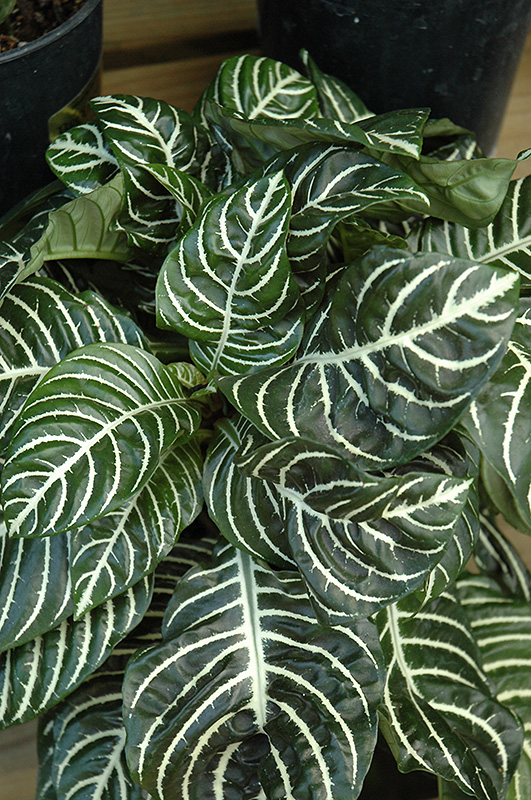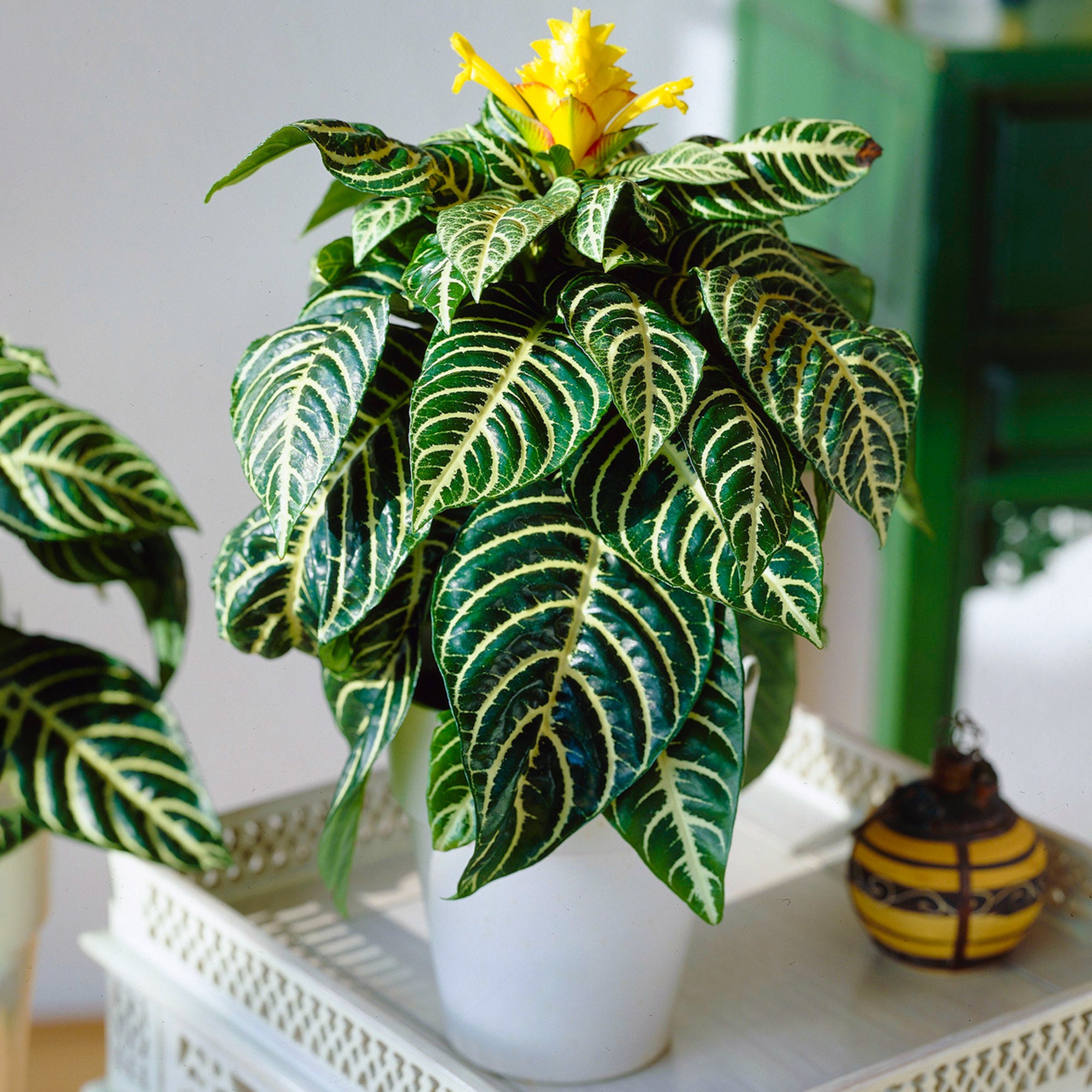
Aphelandra Squarrosa, Zebra Plant. Stock Image Image of flowerpot, floral 271151449
Aphelandra squarrosa (zebra plant) is a sensitive houseplant. It is always cultivated for its gorgeous golden blooms and brilliantly patterned leaves. If provided the proper upkeep and situational factors, the zebra plant thrives inside. It is, nevertheless, a sensitive plant that may quickly drop its leaves and grow leggy if not properly cared.

Aphelandra squarrosa Zebra Plant Rare Plants
Even with excellent zebra plant care, your Aphelandra squarrosa will only give you a few years of pleasure, but don't despair. Part of how to care for a zebra plant is propagation. New plants are easily grown from 4- to 6-inch (10-15 cm.) stem cuttings. Remove the bottom leaves and stick the stem cuttings directly into potting medium or into a.

Aphelandra squarrosa 'Dania' Zebra Plant (4.5" Pot) Little Prince To Go
Plant name: Aphelandra Squarrosa (and Aphelandra Aurantica) Common names: Zebra plant and Saffron spike Zebra. Native to: Southern and Southeastern Brazilian rainforest. Lighting: Bright, indirect light. Care: Keep your plant at average warm temperatures 70°F-80°F / 20-25°c with bright, indirect sunlight.

The zebra plant, or Aphelandra squarrosa, is a finicky but absolutely beautiful houseplant
The Zebra Plant, or Aphelandra squarrosa, is a pet-friendly houseplant that is also known as the Zebra Plant due to its unique striped leaves. It thrives in indoor environments and adds a touch of jungle beauty to your home. How do I water a Zebra Plant? Water your Zebra Plant when the top inch of soil feels dry to the touch..

How to Grow and Care for Zebra Plants
Pour soil into the container until it is about 1/3 fill and firmly tamp it down. Carefully remove the Zebra plant from its original pot. Gently loosen about 1/3 of the soil from the root ball of the plant. Using your fingers, carefully loosen and separate the roots until they hang freely from the base of the plant.

Zebra Plant (Aphelandra Squarrosa) Care Guide Plant Vessel
Aphelandra squarrosa, also known as zebra plant can be a real challenge to grow. But the spectacular flowers and showy striped leaves make it worth the effort. If you love to grow flowering houseplants, zebra plant can't be beat The flowers come in late summer and autumn on a tall flower stem that is long lasting - some can last for up to six weeks.

Zebra plant (Aphelandra squarrosa), Acanthaceae Stock Photo Alamy
Zebra plant comes from Brazil and it's admired for its foliage and flowers. Learn how to maintain the proper conditions to grow the species indoors.. Zebra plant: Botanical Name: Aphelandra squarrosa: Family: Acanthaceae: Plant Type: Annual: Mature Size: 1-6 ft. tall, 1-5 ft. wide: Sun Exposure: Partial: Soil Type: Moist: Soil pH.

Growing and Care Guide for Zebra Plant (Aphelandra Squarrosa)
Aphelandra squarrosa, also known as zebra plant or saffron spike, is named for its glossy green leaves marked with bold white veins - similar to a zebra's stripes. In its tropical home of Brazil, this plant grows into a 4 foot (1.2 meter) tall shrub. As a houseplant, you can expect heights of around 15 to 24 inches (38 to 60 cm).

Zebra Plant (Aphelandra Squarrosa)
Zebra plants thrive in a well draining, rich potting soil and with a good amount of peat moss. Zebra plants grow best in soil which has high organic matter content, but which drains well. In practice, a good strategy is to mix 50-60% peat, with equal parts potting soil and perlite or coarse sand. Another strategy to increase drainage is to add.

Aphelandra squarrosa (Zebra Plant) THE PLANT SOCIETY
During the growing seasons in spring and summer, aim for feeding every 1-2 weeks. It's best to use a water-soluble quick-release plant food to feed your Aphelandra squarrosa. Aim for a balanced fertilizer blend, diluted per the manufacturer's instructions. Don't fertilize zebra plants in the winter months.

Aphelandra Squarrosa "Zebra Plant" Landscape Supply Co
Top Tips & Info. Care Difficulty - Moderate. Aphelandra like bright, indirect light away from excessively dark situations. Although an hour or two of direct sunlight in the early morning is accepted, be sure not to fall in the trap of sun-scorch and dehydration. Provide near-constant moist soil, allowing the soil's top third to dry out in.

Zebra Plant (Aphelandra Squarrosa) Buy Plants Online Australia Plants Direct
Aphelandra squarrosa, also known as the zebra plant, is a tropical plant and a member of the Acanthaceae family. It is originally from Brazil. Usually grown indoors, this plant has dark, glossy leaves with distinctive white veins hence the name "zebra plant". It is a beautiful plant but it gets more attractive when it blooms!

Aphelandra Squarrosa Zebra Plant Close Up Stock Photo Image of leaves, leaf 235572844
Aphelandra squarrosa, commonly the zebra plant, is a species from the Acanthaceae family, which is indigenous to Brazil and was classified in 1847 by botanist Christian von Esenbeck when he traveled to South America. Aphelandra refers to the anthers of the flower and squarrosa refers to the position of the bracts when mature.

Cool Rainforest Native Plants Ideas benchbodyunderwear
If the soil is dry, water your Zebra Plant until the water completely drains out of the pot. After you've watered your Zebra plant, allow the excess moisture to drain from the pot for about 5 minutes. Soil should now only hold the moisture that your plant needs and any excess moisture will have drained from the pot.

Zebra Plant (Aphelandra squarrosa) in Lethbridge Coaldale Taber Cardston Pincher Creek Alberta
Discover everything you need to know about caring for Aphelandra squarrosa, also known as the Zebra plant. From ideal growing conditions to common issues and propagation methods, this article is your ultimate guide to keeping this unique and vibrant houseplant thriving in your indoor garden.

Outdoor & Gardening Plants Live House Plant Zebra Plant Aphelandra squarrosa Home & Living etna
The newly planted Zebra plant needs water. Common Aphelandra Squarrosa Issues. These plants are not immune to problems though, and if you are a new owner it is likely that you will come across them. Crispy Leaves. The frequent temperature changes caused by heaters or air conditioners might also result in dry areas or dry leaf margins.